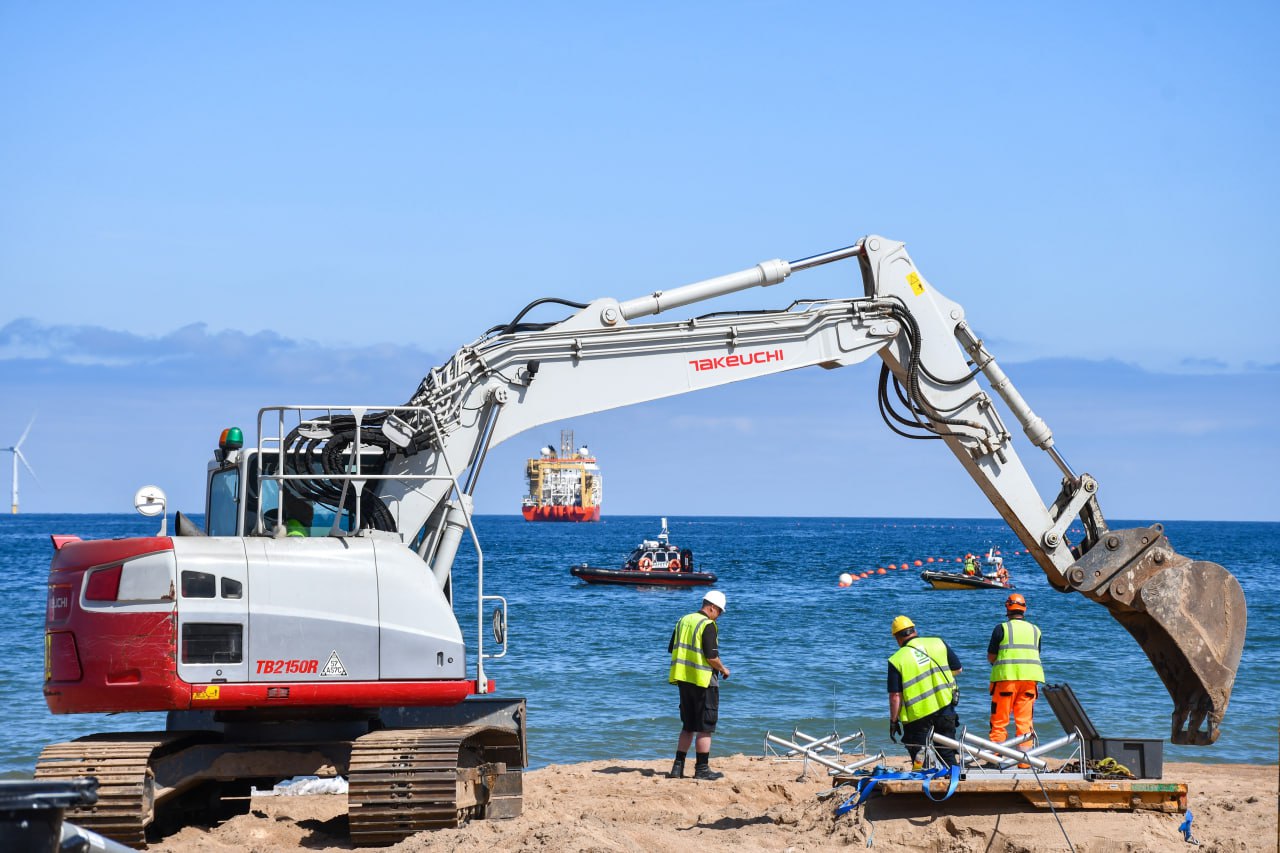Vodafone is building an independent Internet corridor for Ukraine bypassing Russia: why it is unique
20 October 22:38
Vodafone will lay a modern submarine cable system that will directly connect Ukraine, Bulgaria, Georgia, and Turkey. The route creates an alternative data exchange corridor bypassing Russia, removing the strategic dependence on transit through its territory, "Komersant Ukrainian" reports, citing a post on the Telegram channel of Ukraine’s Minister of Digital Transformation Mykhailo Fedorov.
“One of the key points of our Strategy for the Development of the Electronic Communications Sector until 2030 is to build more international Internet highways to create a sustainable Internet in Ukraine. And soon we will help implement one of the global projects,” Fedorov wrote.
The initiative fits into the state Strategy for the Development of Electronic Communications until 2030, which provides for an increase in the number of international backbones and the resilience of the Internet in Ukraine.
Vodafone Ukraine also confirmed its work on the project.
“Together with Vodafone Group, we are launching the construction of a new Kardesa submarine cable system across the Black Sea. It will be a modern digital corridor connecting Ukraine with Bulgaria, Georgia, and Turkey, opening new routes between Europe and Asia. The first cable landfall is scheduled for Bulgaria in 2027, and later it will reach Ukraine. But preparations are already underway,” the national mobile operator’s Telegram channel says.
What is Kardesa and why is it important?
The project is called Kardesa. Its purpose is to provide additional bandwidth, route redundancy, and resilience to the telecommunications infrastructure throughout the Black Sea region. Submarine fiber-optic cables currently carry 97-98% of international internet traffic, so the new route is critical for digital security, independence, and speed of data exchange. The planned additional capacity is up to 500 Tbps, which significantly enhances Ukraine’s capabilities as a transit country between Europe and Asia.
Finances, timing and geography of the project
Construction is to start in Bulgaria in 2027. The declared budget is over €100 million. In addition to the offshore section, the project includes onshore landing stations, trunk connections to national networks, and the modernization of traffic exchange points in the participating countries. For Ukraine, this also means new investments in the land-based part: power supply to nodes, protection, routing, and integration with existing DWDM systems.
It should be noted that submarine cables carry 97-98% of all international Internet traffic. And each new route is a step towards a stronger digital economy.
Economic benefits for Ukraine
The new route opens several economic windows of opportunity.
First, it reduces latency and increases reliability for business-critical services: cloud solutions, fintech, media streaming, gaming, cybersecurity, and telemedicine.
Secondly, the region’s investment attractiveness is growing for data centers and content providers that need independent international access with sufficient capacity.
Thirdly, Kardesa strengthens Ukraine’s role as an EU-Asia link, which can generate stable transit revenues and multiplier effects for related industries such as construction, energy, logistics, and services.
Digital sovereignty and security
Bypassing Russia is about traffic sovereignty: whoever controls the physical infrastructure has leverage over data availability and integrity. An additional sea route reduces the risk of disruption due to political decisions or sabotage at land crossings and vulnerable transit segments. For the public sector, defense customers, and critical infrastructure, this means a more predictable and controlled channel for international communication.
Regulatory and technical challenges
Submarine cables require intergovernmental coordination: approval of sea routes, environmental impact assessments, licensing of onshore hubs, protection zones, and access for operators on non-discriminatory terms. Security issues are also important: physical protection of landing stations, backup power, cable condition monitoring systems, countering sabotage and accidents in the sea corridors. To maximize the effect, Ukraine will need to synchronize the project with the development of domestic highways, traffic exchange points, and open access regulation for all market players.
The new system will provide users with faster and more stable Internet. There will be fewer degradations during peak periods, and fault tolerance during crises will be enhanced.
Businesses will benefit from more predictable quality of international channels, which directly affects SLAs, the cost of cloud services, and the scalability of IT projects. In the long run, this creates preconditions for localization of new services and jobs in IT and data infrastructure.
Watch us on YouTube: important topics – without censorship
Roadmap to 2030
Kardesa is just one element of the overall architecture. To achieve the goals of the 2030 strategy, Ukraine needs to simultaneously: modernize domestic backbones, strengthen cyber and physical security of nodes, stimulate the construction of data centers, develop competition in the wholesale internet services market, and align standards with European digital corridor initiatives. Only a combination of an offshore pipe and a strong land-based infrastructure will produce an effect – from access speed to economic return.
The Kardesa subsea system is already transforming the Black Sea into a new digital corridor, with Ukraine as a key node. The project adds capacity, increases network resilience, and creates conditions for investment in the digital economy. The focus is on reliable, high-speed and secure Internet for citizens and businesses, as well as a real step towards the country’s digital sovereignty in times of war.
Read us on Telegram: important topics – without censorship









